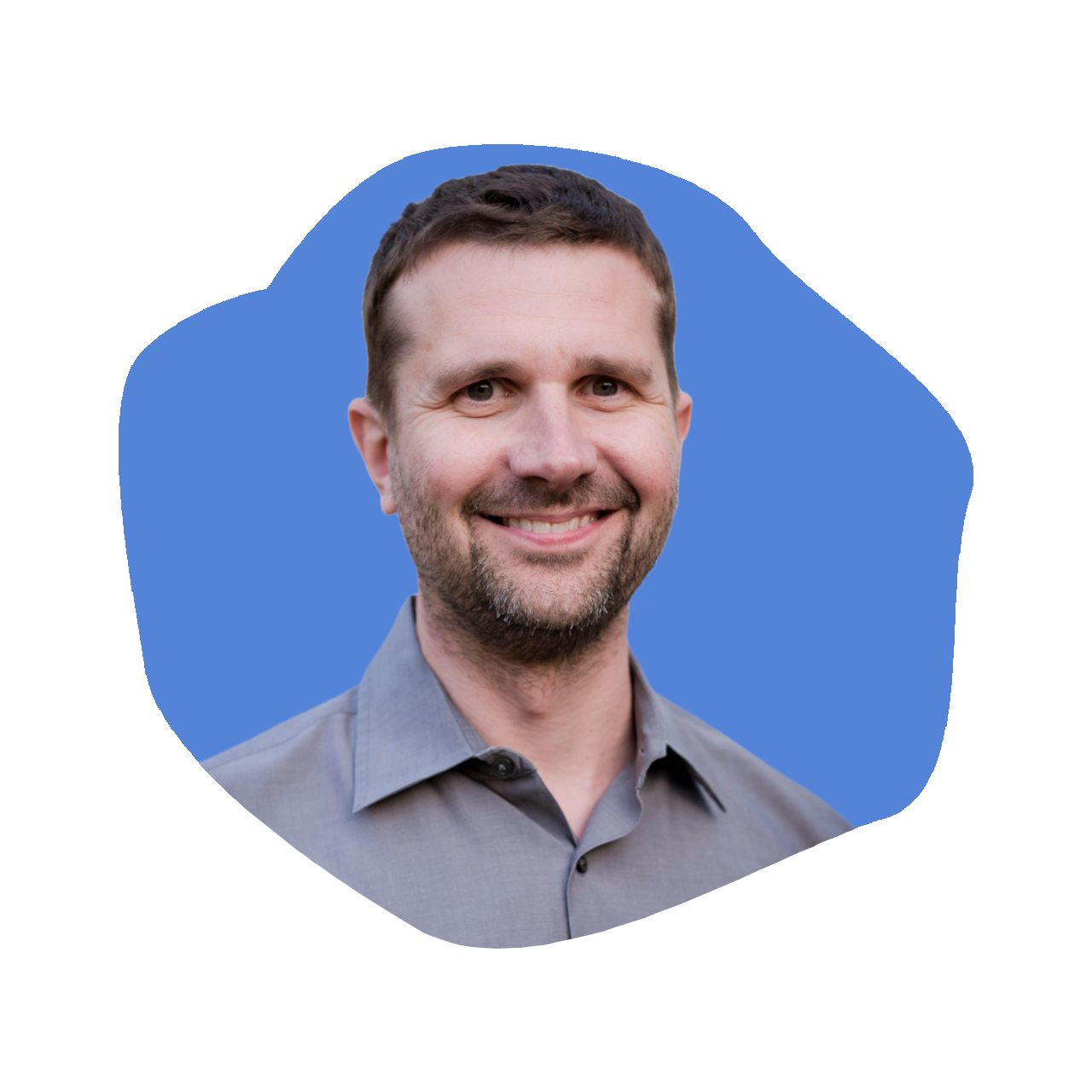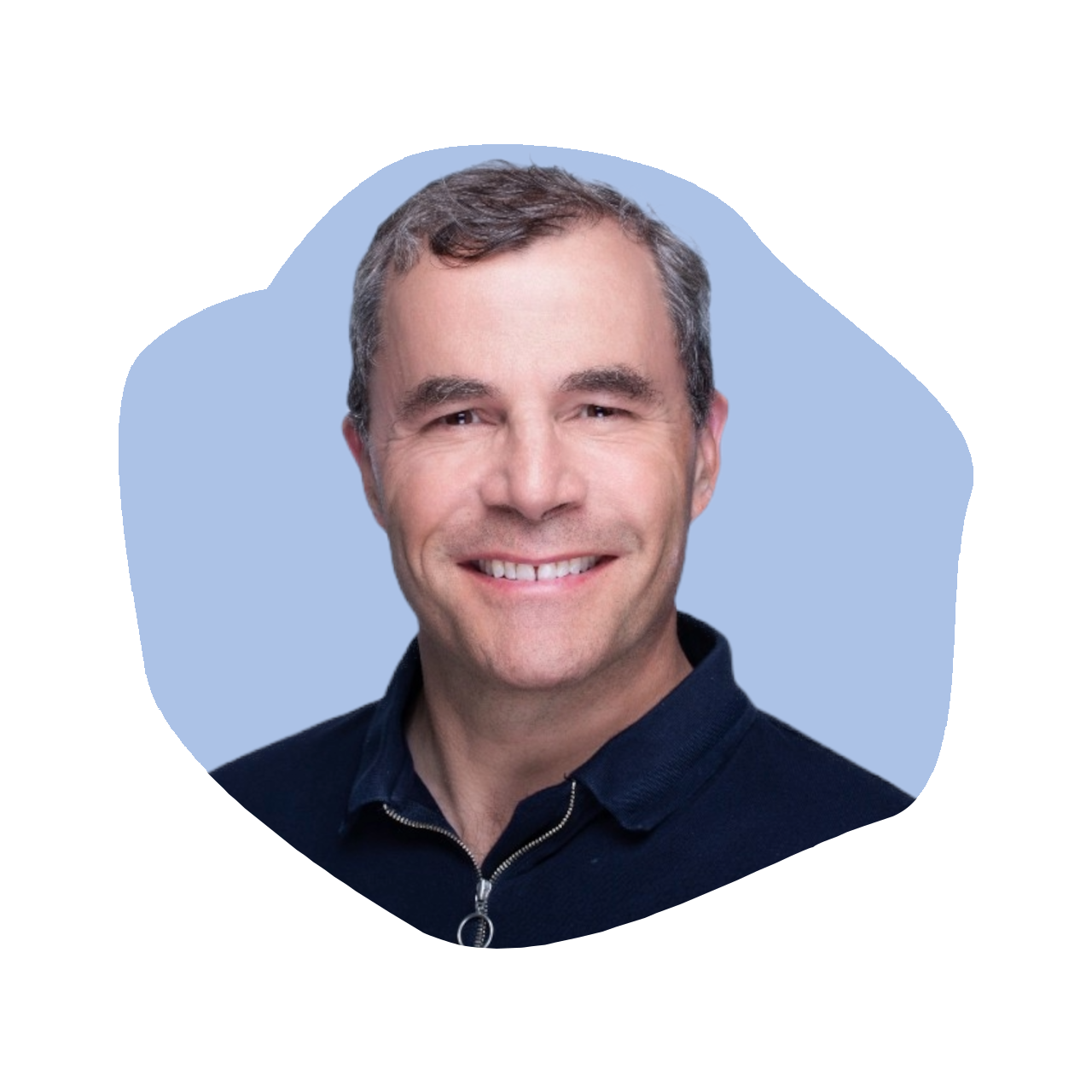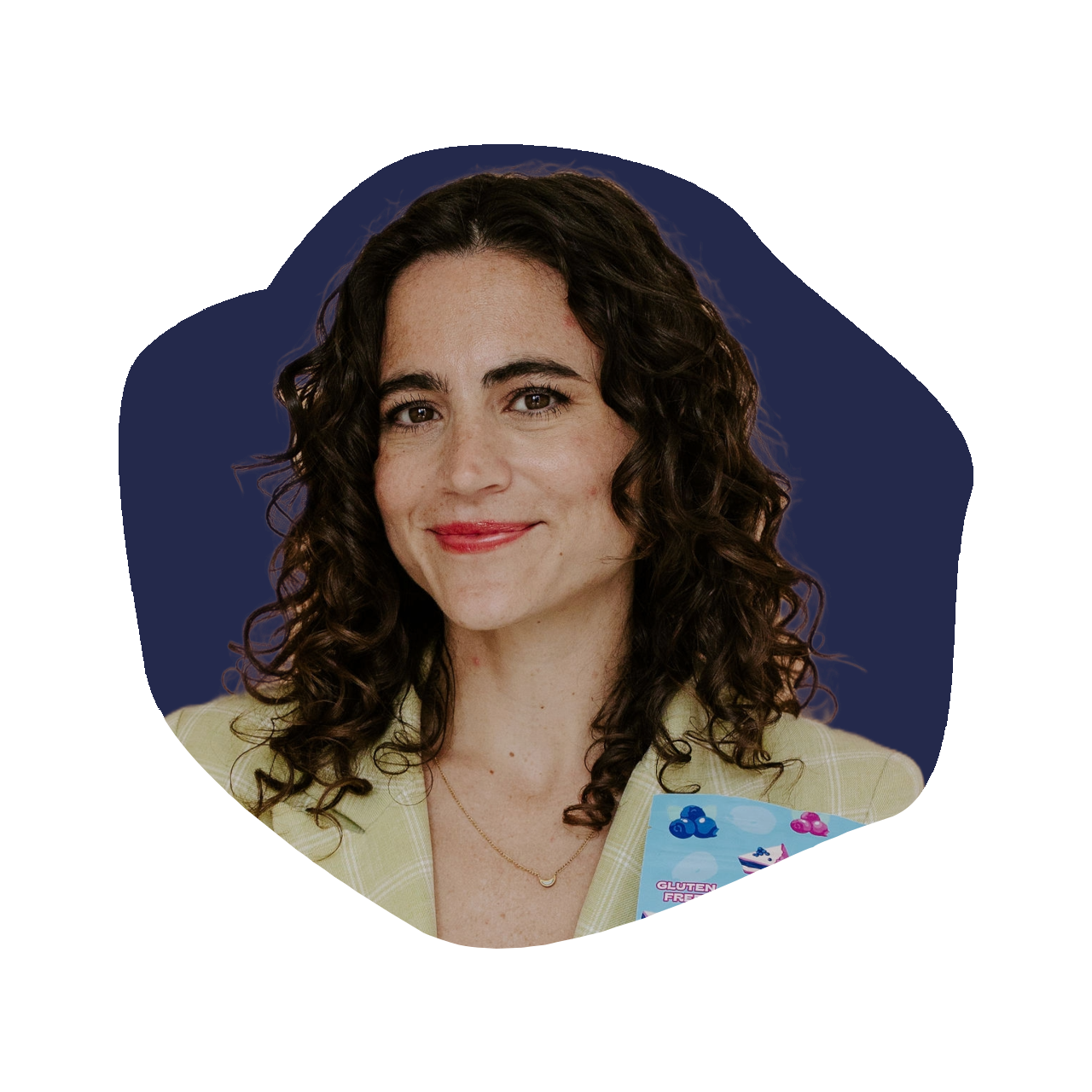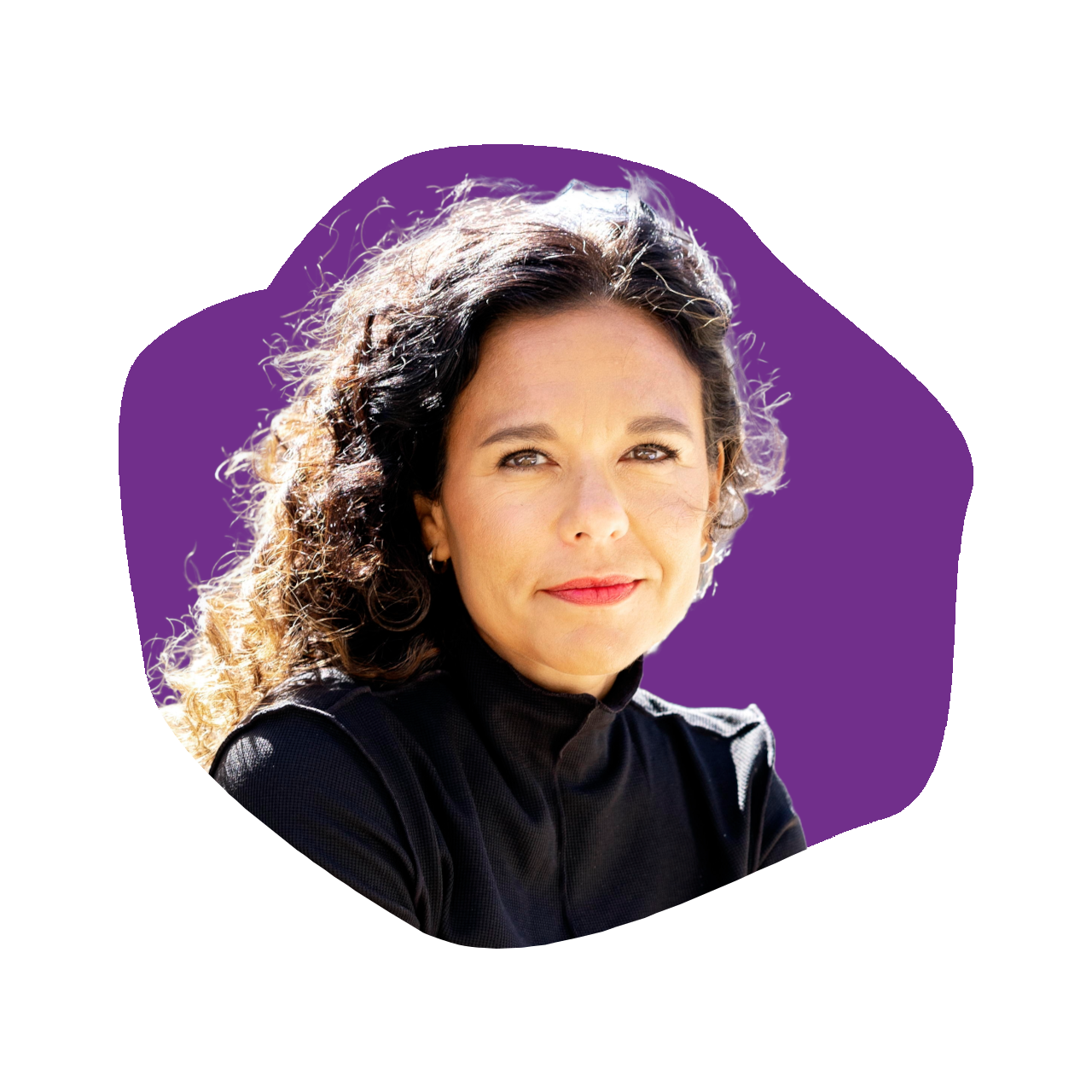Charles Conn: Co-Author of The Imperfectionists
Episode 440

On today’s episode, we hear from Charles Conn, a conservationist, entrepreneur and leader. He is Co-Founder of Monograph Capital, a life sciences venture firm based in London and in San Francisco. He was previously CEO of the Rhodes Trust in Oxford. He is Board Chair of Patagonia and sits on the Nature Conservancy European Council. He was founding CEO of Ticketmaster City-Search as well as a partner at McKinsey and Company. He has co-authored an incredible book called the Imperfectionists which is a followup book to his previously best selling book, Bulletproof Problem Solving. We hear all about six problem solving mindsets, being imperfect and how imperfectionism is the key to companies succeeding in uncertain times. You don’t want to miss this episode. Now on #TheKaraGoldinShow.
Resources from
this episode:
Enjoying this episode of #TheKaraGoldinShow? Let Kara know by clicking on the links below and sending her a quick shout-out on social!
Follow Kara on LinkedIn – Instagram – X – Facebook – TikTok – YouTube – Threads
Have a question for Kara about one of our episodes? Reach out to Kara directly at [email protected]
To learn more about Charles Conn and The Imperfectionists:
https://www.theimperfectionists.org
https://www.linkedin.com/in/charles-conn-5008904
https://www.bulletproofproblemsolving.com
Transcript
Kara Goldin 0:00
I am unwilling to give up that I will start over from scratch as many times as it takes to get where I want to be I want to be, you just want to make sure you will get knocked down. But just make sure you don’t get knocked down knocked out. So your only choice should be go focus on what you can control control control. Hi, everyone and welcome to the Kara Goldin show. Join me each week for inspiring conversations with some of the world’s greatest leaders. We’ll talk with founders, entrepreneurs, CEOs, and really some of the most interesting people of our time. Can’t wait to get started. Let’s go. Let’s go. Hi, everyone. It’s Kara Goldin from the Kara Goldin show. And I am so excited to have my next guest. Here we have Charles Conn, who is the co author of an incredible book called The in perfectionist and I have it right here in case you were watching the visual. But I’m thrilled to have him here with us here today. He is a conservationist and entrepreneur. He’s a co founder of a company called monograph capital, which is a life sciences venture firm based in London and in San Francisco. And he was previously CEO of the Rhodes trust in Oxford Board Chair of Patagonia, and he also sits on the Nature Conservancy European Council, and was also the founding CEO of Ticketmaster City Search, that little company out there might recognize match.com As part of that, too, and he was a partner at McKinsey and Company. So he’s seen a lot he has, he has worked with a number of incredible entrepreneurs. And as I come across a lot of a lot of ideas and entrepreneurs. And he’s written a few books, including bullet proof problem right before this latest book. And in this book, he identifies six problem solving mindsets, especially for these uncertain times. But today, we’re going to have an excellent discussion about being imperfect. And I love to be imperfect. Anyone who knows me, says things like focus groups, maybe. But more than anything, get out there and try and just see whether or not things work and be ready to pivot. So this really, really spoke to me on so many levels, and how it’s really key to be able to follow this if you are leading in uncertain times, as well. So lots of practical tips in here, too. And I’m so appreciative of Charles coming on the podcast today. So thank you so much for being here, Charles.
Charles Conn 2:45
I’m so excited to be here. Kara. Thank you for having me.
Kara Goldin 2:48
Very excited. So you’ve studied being imperfect? I mean, I didn’t know that. That was that that was a topic that you could study. If I did, I probably would have been there, I’m waiting for the next class to be maybe a major in in being imperfect, because I think I will go back to school for sure. Or I could teach it maybe possibly, but a decade of research and 50 case studies, and you share in the book, how companies that follow this approach are not afraid to step out into risk. Why is this mindset so important? Do you believe? Yeah, you know, I
Charles Conn 3:27
think it’s, we were all taught to do strategy. at a different time in the world. You know, the most of the strategic frameworks that you’re taught in business schools, or in big companies came out of the 60s 70s and 80s, when industries were very clearly defined, and were things were changing, but changing in a relatively stable path. And the truth is, none of that’s true anymore. But we still think about strategy development for companies as if it was some sort of dry chess game, when of course it isn’t. And when the world is changing the way our world is, so with programmable biology, automation, artificial intelligence with war, the impact of the pandemic, it’s very easy for those old strategic frameworks to feel like they don’t they’re no longer meaningful, and then to be paralyzed, to be frozen and just think, Well, I’m just gonna wait for equilibrium. Equilibrium, equilibrium isn’t coming. Stasis isn’t coming. This is much more like the long term reality that the planet has faced. And so we need to become as strategists dynamic problem solvers, rather than cool chess players. That’s the reason for the book.
Kara Goldin 4:44
I love it. So what inspired you to write it and were you thinking about this for a long time? Or were was it COVID? Or what what kind of brought it up that you just thought, hmm, I need to sit down and really get these thoughts out.
Charles Conn 5:00
Yeah, so COVID really was a part of it. Rob McLean and I, my co author had written bulletproof problem solving, which is a really in many ways our life’s work. So we work together in McKinsey 30 years ago. And then, as each of us left McKinsey and became entrepreneurs and started working in the science based conservation space, we began to apply the frames that we had learned being business problem solvers to much bigger problems. And that all made a ton of sense. In the depths of the pandemic, when everything was turned upside down, we realized the previous book was a wonderful book about tools for solving problems. We didn’t give people enough of the mindsets, especially under high uncertainty. So what’s the mindset use for approaching problems, not just the tools you use for approaching problems? How do you get comfortable with the idea of leaning into risk, rather than sort of waiting for conditions to be perfect? And that was the genesis of the book.
Kara Goldin 5:59
So how do you define in perfectionism?
Charles Conn 6:03
Yeah, so and you know, by in perfectionism, we don’t mean, you know, deliberately flawed, although that’s an interesting concept. Kind of like the, you know, Japanese wabi sabi approach to perfection, which is to say, how it came out of your process is good. And not to not to take something that’s already good, and to try and make it better. And by doing that, we often over handle things. And you’ve seen this all the time. And I think this is often true in business, and you built a large business yourself. Typically, the best way to make decisions is to sit down together with your, with your team, make your best guess of what other people are doing competitors, suppliers, etc. And then actually make a decision about the path you’re gonna go forward on. But beyond the tips of your toes, or the balls of your feet, so that if the market gives you a signal back, actually, that didn’t make sense, you can shift course. Right. And I think, I think that idea of experimental experimentalism, would be another way of using the term and perfectionism to go ahead and not be afraid to get going. Because you can correct as long as your decisions are reversible, and have relatively modest cost. And this is really important distinction. And one, you know, you’re you’re friends with Jeff Bezos back in the day. What Bezos says is decisions which close off doors and which are very expensive, those should get pushed up high in an organization, you should take them very carefully. decisions which are reversible, and which are a reasonably modest cost, where you learn something by taking the action, push those down to the people who are closest to the front line, and let them make strategy as dynamic problem solving. That’s, that’s the idea of imperfection.
Kara Goldin 7:56
So in the book, you share something that Yvonne Shannara, from the founder of Patagonia said something to the fact don’t exactly quote me on this, but you can study a concept and think it out on paper and spend a long time developing the strategy. And then you’ll look up and someone’s already there. Yeah, such a great, such a great quote. And so true. What does this describe to you?
Charles Conn 8:25
Yeah, and so you know, mean to me, when I, when I hear it, I think of Yvonne, he, what he loves to do is prototype things, and then get out in the field with himself and his friends and break them. Right. And that’s why Patagonia is the company it is today. So he’s never afraid to bank something together. He’s a blacksmith, and he’s stuck, he sews his own clothes, he’ll prototype something, and then get out into the field, whether he’s surfing or fishing or climbing, and then break it, and bring, bring it back and make it better. So you know, high praise from Yvonne is good, not good enough. And it’s that idea that we can constantly iterate. Rather than try and sketch something out on paper, that’s going to be perfect. And again, by the time you turn around, someone’s beat you there, right? He’d rather get out in the field with a prototype that isn’t perfect, and imperfect. And break it. Right. And I think we all should be thinking about strategy that way, rather than some big companies especially, you get punished if you make a mistake. That’s crazy. When the world’s changing this quickly, you should only get punished if you didn’t learn something.
Kara Goldin 9:35
Couldn’t agree more. I mean, it’s it’s it’s definitely something and and this is a question I had for later on in the conversation but seems like a good place to ask it right now. Do you think schools are teaching people to get outside of the box and and and also managers inside of company? Are we teaching that? I don’t think so.
Charles Conn 10:00
Now, and I mean, I don’t understand it, it’s very frustrating to me. I mean, business schools are getting better. But it’s still funny how higher education in general is still taught as a series of disciplines that you learn. And then you would put into practice over 40 years and get the gold watch and die. I mean, that’s an absurd way to think about skills, learning skills and learning, and an absurd way to think about your career. Right? We should be thinking about multidisciplinary learning, we should be learning how to learn, and we should definitely be be be taught how to be in perfectionist, how to make best guests strategies based on good rules of thumb, and yes, good, good analytics, but then actually get into it. And I don’t think our schools are teaching that they’re not teaching people to be bold, confident, step into IT leaders, right. I think in fact, the whole the current, the current generation going through school feels more fragile than ever, not, not more resilient than ever.
Kara Goldin 11:04
Yeah, and I think we’re in a interesting time where I feel like aI kind of caught people by surprise, and especially people who are getting out of school or out of school for a few years. You know, as I’ve said, many jobs that they thought they were going to be able to have, I mean, they’re, they’re kind of quickly becoming non existent. Now, I think
Charles Conn 11:27
that’s right. What I will say is that, the beauty of AI, is that it will eliminate first of all, the most boring kinds of work. You know, today, those algorithms, especially when they’re just working on the on the trash heap that is the internet, or not generating things of enormous grace, and beauty and creativity. And so, problem solving complex problems creatively, in groups of people is still the purview of humans, at least for now. Right. So the most interesting work, I think, is still available to bright people.
Kara Goldin 12:05
So in the book, you identify six problem solving mindsets, especially for uncertain times, but really, for any time, I mean, they were really powerful. Ken, would you mind going through those?
Charles Conn 12:17
Yeah, no, I’d be happy to. And it’s taught me along the way. So the six are curiosity, dragonfly I, O current behavior, collective intelligence, what we call show Intel, which is storytelling. And then in perfectionism itself, which is also the kind of master mindset, if you like, I’ll take you through each one and give you a little example of what we mean by that. That would be great. Cool. So let’s start with curiosity, because in many ways, Curiosity is the parent instinct that’s behind all of this in perfectionist or experimentalists approach to developing strategy. What’s funny is when we’re kids, we know that curiosity is our friend, right? You know, kids who are three or four years old, you remember, they asked 200 questions an hour, right? It’s just incredible with the kids, kids are just constantly asking questions, because they are looking for patterns that make sense of the world for them. And the way they do that is to touch it, put it in their mouth, ask a question. And then unfortunately, as we get older, and as we learn patterns that work. So imagine the first time you tried to tie your shoelace. And it was so frustrating, didn’t make any sense that by the time after a while, you get the nod over in the double loop. And then that’s a pattern that you’ve already solved. And we’re no longer curious about how you might tie a shoe in area after area of our lives. We extinguish that question why? Why does that makes sense? Or how does this make sense? Or when should I do that? And we become pattern in posers. Instead of pattern pattern recognizers and pattern curiosity errs, we become pattern and posers and so when when we meet something, an event, we then impose a pattern on it. And unfortunately, that loss of curiosity means we’re not open to different ways of solving complex problems creatively. So my favorite example is Edwin Land. So brilliant chemist and scientist. He happened to be on holiday with his daughter, Jennifer in Santa Fe, New Mexico, in the 1940s. And he was going around taking pictures with his conventional film camera, and his daughter tugged on his sleeve and said, Daddy, can I see the picture? And he knelt down and he said, oh, sorry, honey. Well, the way this works is, you know, we expose chemical emulsion to light. And then he stopped him, you know, stops himself and he realized, like, why do we do it this way? Why do we take it to the drugstore and have it sent to a lab? Have him come back two weeks later. Why couldn’t we do that in a single process? So the curious question of his daughter created a cascade in his mind that led to the Polaroid Instamatic camera that we think of today, he borrowed a bit of curiosity from this wonderful daughter, right? And we see this again. And again, when you look at innovation. Innovation often doesn’t come from the experts in the field. Right? Another favorite example, one of my dear friends, and one of her business school classmates, called Kelsey worth was at business school. And her classmate had late in life had braces, and he just gotten the braces off, you know, the braces were awful. Imagine being in grad school and having braces. And you know, then he forget to put in his, his retainer, and you have to put it in three days later and hurt. But he noticed this cool thing, which is, that meant that the retainer had actually been moving his teeth to. And the retainer, which was this clear, hard plastic was much more attractive than the original braces were. And that led him and Kelsey to think, I wonder if we had a set of computer designed, clear braces, whether we can move the teeth just as we could with the terrible old metal ones. And that was the idea that led to Invisalign, which is a $20 billion business today. Didn’t come from an orthodontist didn’t come from a dentist, didn’t come from any anybody had anything to do with it came to someone who was curious, came to someone who was curious. And they they saw it through a different lens. And that’s the second of these mindsets, which is very much a cousin or a sister to curiosity, which is we call dragonfly. So, dragonflies have these incredibly beautiful compound eyes. 30,000 separate lenses in these eyes, plus three other lenses behind they can see 360 degrees almost. And they can see specter of color that we can’t even begin to see. We like to use that we don’t really know how the unsexy is but we like to use it as an analogy. We borrowed this from Philip Tetlock, who’s an amazing Problem Solver himself, for making sure when you’re about to run off into problem solving, not only do you remember to be curious, but you remember deliberately to see things through different lenses. In the case of Kelsey, and Zia, who was her her partner in building the business, they saw braces from the perspective of the patient, what it’s like to be a person wearing braces the curb side, right. They looked at it through that lens. And you know, I just think that’s brilliant. That we I don’t know,
Kara Goldin 17:45
I was just gonna I was gonna chime in. Sorry to interrupt you. But it’s fascinating because when we, when I was starting hint, we were trying to get a longer shelf life. And everybody I wanted a product that didn’t have preservatives in it. And all of the bottlers that we went to said, you actually can’t use real fruit in a product without preservatives. And I said, Why? Why? I said, I didn’t come from the industry. I came from tech. I have no and no one could answer the question. And my father always said to me, is if somebody can’t answer the question, don’t let them off the hook. Just keep asking why. And I was that kid. And so I just kept asking why. And I found humor in it that that people would actually run product on their lines and have these, you know, multimillion dollar manufacturing facilities. And nobody knew why. And then I started wondering why there were different, different beverages in the juice aisle that didn’t have preservatives in them. And how were they doing it? And it ends up the juice and water are on, you know, different plants typically. And so we found a guy actually, you’re familiar with Silicon Valley down in Watsonville, California, and we call them and my husband’s was Chief Operating Officer of hint, and he’s running an apple juice plant. And we asked him the question, and he said, he said, because we use heat. That’s how we do. That’s how we’re able to do it. And so we ended up bringing that into the industry, in the water industry using heat, and no one was doing that. And we were shocked. And so sometimes it’s just a simple, it’s looking at a different industry, right, or a different category within an industry and seeing how they’re doing it. When no one else who has been living in that in History is willing to go there. And it was
Charles Conn 20:04
just right, like the orthodontist couldn’t see. Changing teeth. And for you, the conventional food scientists couldn’t see it.
Kara Goldin 20:12
They couldn’t see it. And they and today it’s industry standard that people aren’t using preserved. Yeah. I mean, it was really crazy. So anyway, sorry to interrupt you. But no, I
Charles Conn 20:25
think that’s, that’s a perfect example. And another one I love of seeing things from through different lenses. You know, Andy Jassy who was now runs Amazon, but at this time was just a guy working for Jeff. And they had developed, you know, this, you know, server farms and what became what we now call cloud computing. Right? And, and they had developed it for Amazon’s own uses. But it was Jesse one day who said, Hmm, I wonder if this set of tools could be useful for our customers? Right? And nobody else thought about that. So why didn’t cloud computing come out of IBM? Right, Oracle, or one of these other giant computing shops? It didn’t. It came out of Amazon. And now Amazon is still one of the biggest players in cloud computing, right? It takes it takes that curiosity and it takes a willingness to see things through a different lens, we always start by saying, at the very least, imagine what this looks like, from your supplier. Imagine what this looks like to your customer. What does it looks like to a competitor or an incipient competitor, or to someone who you might like to be your customer? But isn’t your customer today? And ask them to look at what you’re doing and say, how does that make sense? Or doesn’t make sense? Right? And that that’s that, you know, critical second mindset?
Kara Goldin 21:46
Definitely? Well, I think there’s, as that point was coming up in the book, I thought, you know, when you have these moments where people are coming up inside of organizations with these ideas, you need a leader that is willing to be open to those ideas. But also, I think, typically, when you’re coming up with these ideas, it’s not about cost savings. Right? It’s kind of like, wow, that could be really great. That could help us a lot. Maybe like cost savings, probably as part of it somewhere in there. But that’s not what they’re leading with. Right? It’s not a bottom line. If we could do this, then we could save lots of money.
Charles Conn 22:32
Yeah. Good. Yeah. Sometimes that’s a good lens, too. But what each what you were doing just there was trying on different lenses, right? Those are a different lens. Sometimes the right lens is, I wonder how I could save money. But usually, it’s not. Usually the lens is, I wonder if this would be usable? Right. And I think, you know, back to that Yvonne Shannara. Quote, I mean, that’s how he thinks, yeah, something is this Hmm. I wonder, I wonder, there’s a better way to do this. I bet there’s a better way to do this.
Kara Goldin 23:03
So interesting. So Sorry, I interrupted you before, I’d love to hear the rest of the six,
Charles Conn 23:09
you’re letting you know. And I think that’s a very natural segue to the third one, which we call a current behavior, which is a funny sort of language. But what a current behavior means is what actually happens, not what you hoped happened, or what you wish happened. A current behavior drives us to think about how can we generate our own data? When I was a young management consultant at McKinsey, the very first thing we do when we when we got a new project working with a company, was we go try and find the existing datasets that were commercially available in that industry, right. And when I think about it, now, I just think that’s nuts. Because if you can buy a dataset, so can anybody else, right? If you generate your own data, by thinking up your own experiment, you’re likely to generate insights that nobody else has. Right. And so with, with the advent of the Internet, and software, people are now more open minded about experimentation. You know, when you design a website, people know about a B testing, try this interface. Try this interface, see which one sells more widgets, right. But what’s interesting is we can take that idea of creating your own experiments, pardon me much more broadly than just internet comparisons. So one of my favorite examples here is in the heaviest of Heavy Industries, which is face. You know, NASA has been around for 70 years, they’ve been spending billions and billions of dollars, sending payloads into space, including humans into space. So can you imagine that anyone could come along and revolutionize that industry? By being more experimental? Sounds nuts, right? Elon Musk, whether you love them or don’t love them, right, is an incredible entrepreneur and so he tackled space And what did they do? So they’ve done all kinds of clever things, we don’t need to spend a ton of time on it. But the biggest thing they’ve done is instead of sending three or four missions into space a year, they’re now doing 20 or 30 a year. Each time they do it, they’re testing something new, 3d printing component parts, using nets to catch the expensive nose cones. Using materials from the automotive industry that are used for heat shielding, that’s much cheaper than stuff that’s designed specifically for for space travel. Every single time they do a launch, they’re testing something, sometimes it fails. Most recently, with their giant rock rocket, they had what’s called an unplanned disassembly, right. But if you listen to them ahead of time, they said, This may well fail. But there’s 20, new things that we’re testing. As we send this rocket into space, they weren’t afraid to be imperfect, they, all they were afraid to do was to have something break without them learning something from it. And so by being willing to experiment at scale, they’ve driven down the cost curve of sending things into space in a way that’s just unfathomable. So 95% reduction in the cost to send a kilogram into space, which is nuts from like crazy. Yeah. Michonne from 50,000, down to a couple 1000 over the course of less than 15 years, right? By developing and testing experiments. And we you can almost any industry you think of you can bring experimentation developed and designed by you into that space.
Kara Goldin 26:41
So interesting. I love the example in the book with nature conservatory. Can you share that situation? Yeah.
Charles Conn 26:49
So so this shifts us to the, to the next mindset. And it’s just it’s one of my favorite examples. So I’ll start with Bill Joy, you know, who was the founder of Sun Microsystems and who, you know, came through Berkeley before, just this amazing human and he He’s famous for something called Joy’s Law. And Joyce law said, this says the smartest people probably aren’t working for you. And so Joy thought about that, and thought, how can I get those other clever people that are out there, laboring in my garden, his actual words. And he he took a piece of a lesson from when he was at Berkeley, where they were working on Unix, the common computer system that was originally many, many years before developed it AT and T but then became open source. With open source software, you have engineers from all around the world who are making it better, no one gets paid for it. But it becomes a collaborative project, that Unix is still the backbone today of both the Apple operating system, and the Microsoft operating system, the PC Operating System. In a way, what are most of our software companies do today is really just the last mile that is the customer application. We are all based in Unix, this open source, again, getting all these clever people to work toward a common a, what the specific example here is, how can we use that idea of collective wisdom, especially when we don’t know how to do something. So the Nature Conservancy is interested in saving fish species and other animals species that are endangered. And they know when people do live capture efficiency, whether they use nets or hooks, the fish come onto the rocking boat at sea often in storms have to make split second decisions about whether a fish is one they should keep. It’s okay. They’re abundant or not. And, you know, everyone knows you can put motion cameras on moving cameras on the chips, but no one knew how you could take those images and quickly make decisions. So what they did is they put out a Kaggle Kaggle is a platform for doing idea competitions. They put $150,000 prize so almost nothing, right 3000 Different companies and people submitted ideas. And the one that one was a computer vision algorithm that looked at the shape of gill plates and fins and quickly could determine no that’s an endangered tuna. Please put that over the side carefully. Or that’s it tonight. It is okay to catch any. So the Nature Conservancy which had no ml AI capabilities in house was able to externally source a wonderful idea. They’re able to tap into collective wisdom. And I just I think it’s you know, as we develop strategies, we need to remember that we shouldn’t be hermetically sealed. Our company should be porous, and we should be learning wherever we can from other people.
Kara Goldin 29:58
So maybe you’re I was listening to this interview, and you’re thinking, this is not my organization at all right? I do not have the right people, I am not this person. What do you do?
Charles Conn 30:13
Yeah, so I think you can start in all kinds of very simple ways you know what you can, when you’re doing your strategy workshops, make sure you do perspective taking, which means you really do step out of your own shoes and say, what would this look like from the perspective of a potential competitor, it also means that you might set aside, let’s say, if I said you, you put $1.10 Aside of your research budget, to do open sourcing of ideas, or to use crowdsourcing via these various platforms, so that you bring in just one in $10, you bring in ideas from outside, right, that doesn’t sound like an impossible thing to do in any firm. And so just like the idea of being a perfectionist means stepping into risk. We think you can step into these ideas without sort of feeling like you’re overthrowing everything about your company.
Kara Goldin 31:02
Now, I think that’s great advice. And if you’re interviewing people, for these skills, anything that you would would ask people to try and probe if they have this aspect in in their, in their DNA, I guess, or,
Charles Conn 31:21
yeah, well, so I think the worst thing you can do in an interview is ask people sort of rote questions. Yeah, the best thing you can do is ask them problems, and get them to tell stories, right? So I love to do well, what if what if you find yourself in a situation where, you know, you had it, you had to determine quickly which species of fish had come over the side? What would you do? Right? And you get people who try and have very prepared or formal answers, and you get people where you can see that they’re genuinely curious. Right? And I look for curiosity. I look for creativity. And I look for people who are willing to step outside of their own experience, right? Ego is the SEC is sort of the death of great strategic thinking. Right? And we all write, yeah, we all have, but the more you can let go of your attachment to your previous frames of what works and doesn’t work, the more likely it is, you’ll be able to develop a clever strategy.
Kara Goldin 32:24
So such an incredible book, thank you so much for coming on, Charles. I really appreciate it. And Charles Kahn and Robert clean, wrote this book, The perfectionist. Excellent, excellent. I’m gonna go back and read parts of it, as well. But thank you again, Charles, really appreciate it. Well, I’ll have all the info in the show notes as well. So
Charles Conn 32:47
love being here. Thanks so much for having me.
Kara Goldin 32:49
Thanks again for listening to the Kara Goldin show. If you would, please give us a review. And feel free to share this podcast with others who would benefit and of course, feel free to subscribe so you don’t miss a single episode of our podcast. Just a reminder that I can be found on all platforms at Kara Goldin. And if you want to hear more about my journey, I hope you will have a listen or pick up a copy of my book undaunted, which I share my journey, including founding and building hint. We are here every Monday, Wednesday and Friday. And thanks everyone for listening. Have a great rest of the week, and 2023 and good bye for now. Before we sign off, I want to talk to you about fear. People like to talk about fearless leaders. But achieving big goals isn’t about fearlessness. Successful leaders recognize their fears and decide to deal with them head on in order to move forward. This is where my new book undaunted comes in. This book is designed for anyone who wants to succeed in the face of fear, overcome doubts and live a little undaunted. Order your copy today at undaunted, the book.com and learn how to look your doubts and doubters in the eye and achieve your dreams. For a limited time. You’ll also receive a free case of hint water. Do you have a question for me or want to nominate an innovator to spotlight send me a tweet at Kara Goldin and let me know. And if you liked what you heard, please leave me a review on Apple podcasts. You can also follow along with me on Facebook, Instagram, Twitter and LinkedIn at Kara Goldin. Thanks for listening









